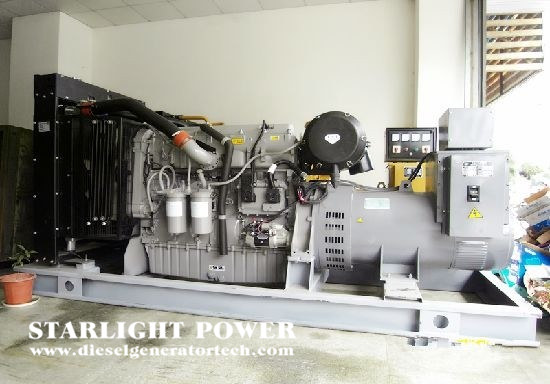Today, we will briefly introduce the use and maintenance of electric vehicle batteries in diesel generators.
Battery installation: Diesel generator batteries are generally used in series, that is, the positive pole of one battery is connected to the negative pole of the other battery, all batteries are connected together, and finally the remaining positive and negative terminals are connected to the corresponding wiring of the electric vehicle. The motor, controller, instrument, etc. of the car are the electrical loads of the battery. Electric vehicles generally have battery boxes, which are divided into slash-type, rear-plug and chassis-type installations from the installation position, and their structures and shapes can be described as varied. Every electric car factory has its own characteristics. The battery box is generally made of engineering plastic, which has good strength, light weight and easy installation. The battery box is generally composed of a bottom slot, an upper cover, a battery contact point, a charging socket, and a trolley lock. The bottom groove is fastened with the upper cover and fastened with self-tapping screws or bolts. The battery box is designed according to the battery model specifications, and its good heat dissipation performance should be considered when designing the whole vehicle.

Charging of the battery: "The battery is not used but charged", this statement is by no means alarmist, the charging performance of the battery plays a pivotal role in the service life and performance of the battery, and must be paid attention to.
Requirements for the battery charging process: understanding the basic requirements of the battery charging process is the basis for analyzing various charging technologies. The basic requirements for battery charging are: the charging current should be less than or equal to the charging current that the battery can receive. Otherwise, the excess current will cause the electrolyte to be consumed too quickly, resulting in the following hazards: Increase the water loss rate of the battery and increase the maintenance workload. For maintenance-free batteries, it will cause early failure of the battery; produce acid mist and cause environmental damage Pollution, endanger the health of workers; reduce the charging efficiency, resulting in a serious waste of energy.
The charging process is the reverse reaction process of the discharge electrochemical reaction. If the charging electrochemical reaction process is carried out in an ideal state, this process should be a reverse reaction of each other, that is, the charged power and the discharged power should be basically equal. However, in the state of severe gas evolution, the electric energy consumed by the electrochemical reaction process of effective charging does not reach 40% of the total electric energy, that is, more than 60% of the electric energy is wasted.
The generation of gas accumulates inside the porous electrode of the battery, which reduces the contact area between the electrolyte and the porous electrode, that is, the charging electrochemical reaction interface is greatly reduced, the charging chemical reaction speed is reduced, the charging is very difficult, and the charging time is prolonged. Severe gas evolution will damage the battery:
(1) The generation of a large amount of gas has a scouring effect on the active material of the plate, making the active material easy to loosen and fall off. (2) Under higher polarization voltage, the grid of the positive plate will be severely corroded, resulting in PbO2, which is completely different from the electrochemically living PbO2, is an irreversible oxide, and has poor conductivity. And make the grid deform, brittle, lose the skeleton and conductive effect. Therefore, overcharging should be prevented as much as possible during charging. Insufficient charging for a long time, the unreacted active material will produce irreversible high-positive large-particle PbS04 grains (ie, irreversible sulfation), which will reduce the battery capacity, increase the internal resistance, and increase the difficulty of charging, resulting in early damage to the battery. Therefore, the battery should be fully charged as much as possible to prevent irreversible sulfation.
Starlight Power was founded in 1974 and is one of the earliest manufacturers of generators and diesel generator sets in China. If you want get more information, please feel free to send email to [email protected] we will pay highly attention on your question.
Copyright © Guangxi Dingbo Generator Set Manufacturing Co., Ltd. All Rights Reserved | Sitemap
Update cookies preferences